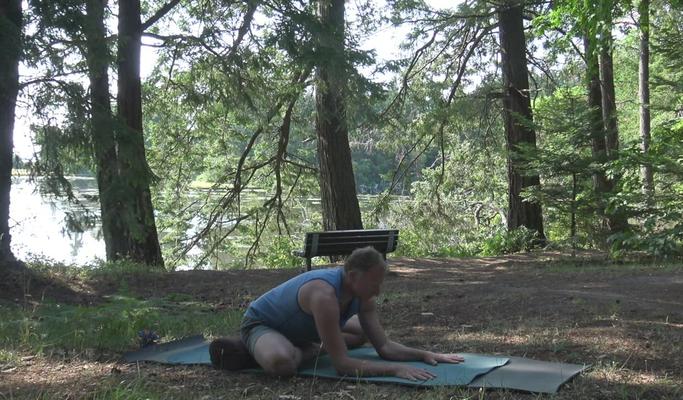Don't have an account? Sign Up
Yoga for Self-Compassion
472 Followers
This class is a more challenging beginner yoga flow that invites you to cultivate self compassion. Coming from a “no pain no gain” culture, many of us benefit from being reminded that practising yoga in a way that helps us honor the experience pleasure in the body can be a more effective way to calm the nervous system, while still building strength and alignment. This class can also help you appreciate the experience of pleasure in your daily life.






Comments
I loved this class; didn't want it to end; I love your style and your focus on the body and the way it feels in any given moment; I love the dance and grace that you bring. Thank you Ron!
What a lovely, relaxing class, thank you Ron! I'm doing the Poise and Precision challenge for the 2nd time (first did it as New Year 2020 challenge, if only we had known what was in store!) and this class feels extra necessary in January 2021.
As a runner prone to injuring myself through overtraining, I appreciate the reminder that 'no pain no gain' can be a detrimental mantra. I appreciated this opportunity to slow down and thank my body for all it does.
Thank you for this class. Many yoga classes, even at Beginner I level, leave me feeling as if I'm "not flexible enough for yoga." As a textbook Type A, I appreciated your encouragement not to go where it doesn't feel good. Your adaptations were helpful and presented in a way that didn't make me feel as if I was wimping out. However, one of your stretches didn't work at all for me. I find it difficult to interlace my fingers and turn my palms away from my head, even with my hands as waist level. Raising my hands to shoulder level with elbows slightly bent is possible but uncomfortable. My limit is 30-45 degrees above horizontal, which I can hold only for a few seconds. Bending my elbows 90 degrees helps a little (including hands at waist level), but I still can't get close to arms overhead with palms facing the ceiling. Any suggestions?
Love your approach.......thanks Ron!